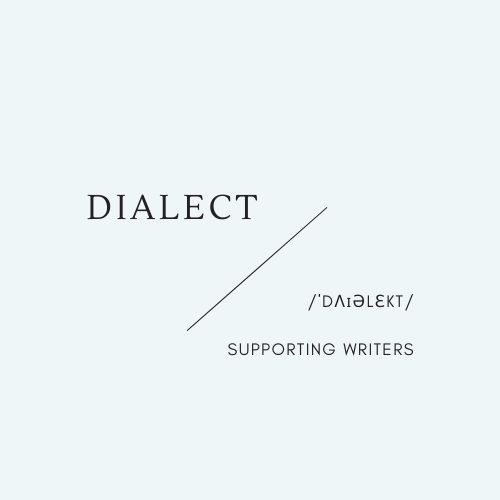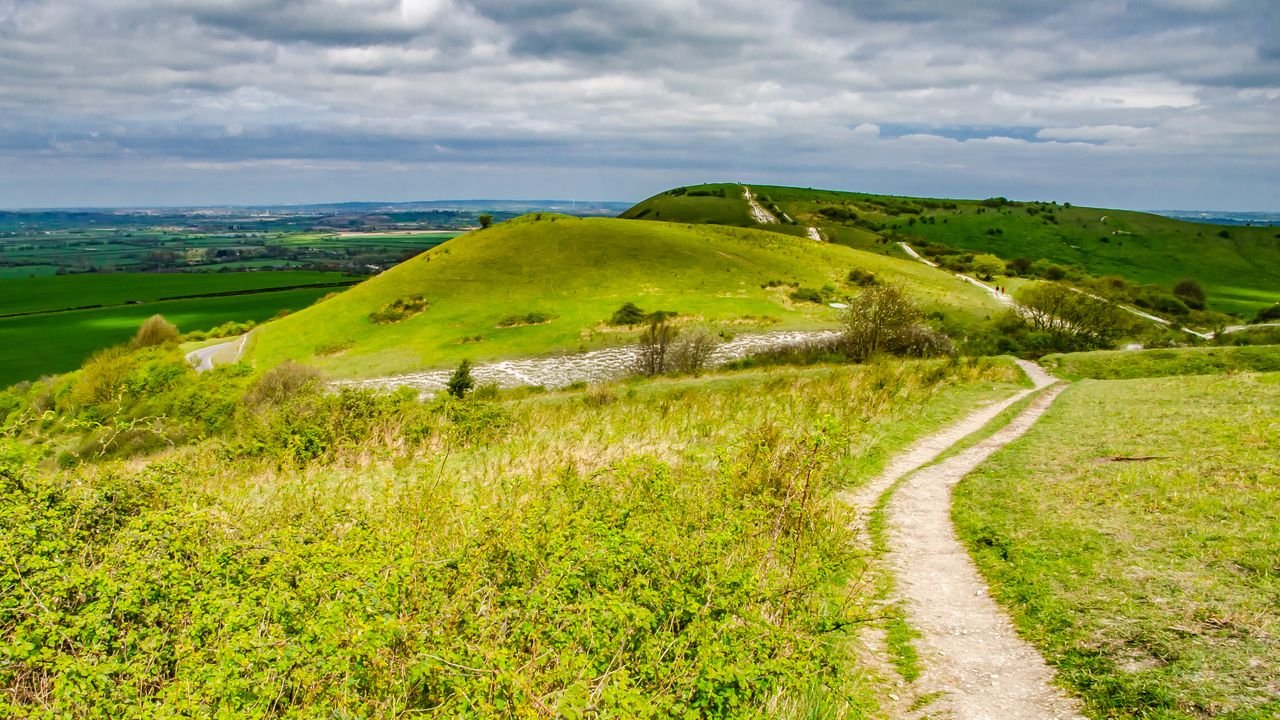The uses of enchantment
Can local stories offer inspiration in unlikely places? Sarah Royston roams the byways of history and folklore, finding new ways to encounter ordinary landscapes.
THIS IS A REVERBERANT BRIDGE, says the rusted sign on the railway crossing. STAND ON THE THIRD STEP AND SHOUT: TARRASK, BABARANG, YAHYAHDI. The instructions sound like a summoning spell. But this isn’t the sort of place you’d expect a mythic being to manifest.
I’m between Luton and Biggleswade, a few miles from the A1M. The East Coast Mainline runs below the footbridge, scoring the land with a slash of steel. From my elevated position, I look over moss-brown fields to a disused sewage works, a graffitied flyover, and the frayed outskirts of commuter towns. Blue-tits twitter in the brambles; red kites wheel in the sky. This is edgeland—neither urban nor wild.
When work brought me to Hertfordshire, I thought it was a “blandscape”, devoid of myth or meaning. How could such a dull terrain hold stories, or inspire them? But over the last decade, I’ve found myself tuning in to this unsung place. It happened almost by accident. Craving greenness, I started walking local paths, seeking out the scrubby woods and low chalk hills. I made pilgrimages to tiny fragments of nature reserve, and the sources of streams. Often I followed an ancient track called the Icknield Way.
Icknield Way
On my ramblings, I noticed intriguing map-marks, sign-boards and place-names, like:
Holy Well (destroyed)
Sally Rainbow’s Dell
Jack O’Legs’ Grave
…that invited me into holloways of history and legend. I began to study local folklore and learn about the people who’ve walked, settled and storied this region since Neolithic times. These sparks have kindled my own writing.
I’m especially fascinated by St Faith’s Well in the hamlet of Hexton, which was a centre of pilgrimage and healing until the Reformation. Its history inspired my flash piece: “In the Shrine there stood a Statue with a Stone set in its Foot which was called Lady of the Spring”. The title draws on an account by the lord, Francis Taverner, who levelled and drained the site in the 17th Century, calling it “a waste and unprofitable and neglected piece of land”. He was so thorough that no trace of the well now remains.
The yews in a nearby churchyard prompted me to write a story called “Long Player”, in which folk-song collectors pay a heavy price for unearthing the music of the dead. The name of a character in the piece is that of a local woman who was alleged to be a witch in the 18th Century, Sally Rainbow. She lived in a steep-sided hollow near Bramfield, which is still named after her. Other stories of mine are inspired by folktales about Piers Shonks the dragon-slayer; a stream called a Woe-water that flows to warn of disaster; and the pasque-flowers that spring from the blood of fallen Danes.
pasque flowers
As for the Icknield Way, it seems to thread through everything I write, including a recent short story “She Walks in Fields of Light”, based on a real-life solar farm battle. Fiction helps me explore the darker sides of this landscape too, such as impacts of intensive agriculture on biodiversity. I’m currently researching a piece inspired by a quarry-pit called Gerry’s Hole, where a Victorian railway-worker drowned. Documents from the period reveal the corruption of the companies involved, and the appalling death rates among their workers. Even the tracks under the railway bridge have tales to tell.
I’ve found that this ordinary place is rife with enchantment, loud with stories. By exploring these folkloric and historic terrains alongside physical ones, I can encounter the landscape in new ways, and connect with it more deeply. The Scottish writer Nan Shepherd described something like this when she walked into rather than up a mountain.
Standing on the footbridge in a February dusk, I wonder about that term: reverberant. Is it connected to the Latin verbum: word? I like the idea of words that echo and re-sound. Stories as shivering bridges, connecting us through time.
Later, I’ll learn that the etymology is from verberare, to beat or strike. Reverberant: beating again. Like the drumming of footsteps; aboriginal songlines; the prayer-in-motion of pilgrimage. I’ll remember that, next time I go tramping. Notebook in hand and one ear to the ground—tuned into the resonant track.
Notes
These ideas are explored further in an essay in Undefined Boundary, available here: Undefined Boundary: The Journal of Psychick Albion - Volume 2/Issue 2 PRE-ORDER | Temporal Boundary Press (bigcartel.com)
The term “blandscape” is borrowed from Christopher Hadley’s book, “The Hollow Places”.
Sarah Royston
Sarah’s writing draws inspiration from queer ecologies, plant-lore and the landscapes of southern England. She embraces the Hookland motto: re-enchantment is resistance. Her work is published in Dark Mountain, The Rumpus and Crow & Cross Keys, among others. She lives in Hertfordshire and works at Anglia Ruskin University. Website: https://hedgeways.wordpress.com





